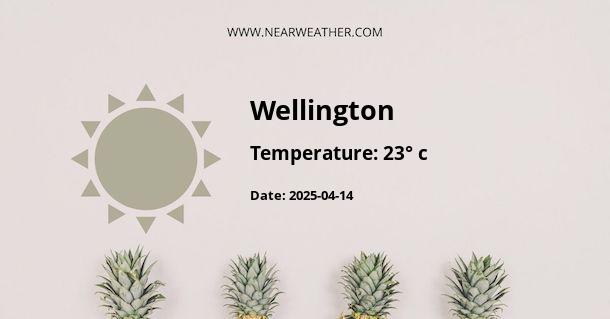Wellington, Australia: Climate and Weather Year Round
Wellington is a picturesque city located in New South Wales, Australia. It is known for its stunning landscapes, vibrant culture, and diverse climate. Understanding the climate and weather patterns of Wellington is essential for residents, tourists, and anyone planning to visit the region. In this article, we will explore the climate and weather conditions experienced in Wellington throughout the year.
Geographical Location
Wellington is situated in the central-western part of New South Wales, Australia. It lies on the banks of the Macquarie River and is surrounded by rolling hills and stunning natural beauty. The city is approximately 352 kilometers (219 miles) west of Sydney, the capital of New South Wales.
Climate Classification
Wellington falls under the category of a humid subtropical climate according to the Köppen climate classification system. This classification is characterized by hot, humid summers and mild winters.
Temperature
The weather in Wellington varies significantly throughout the year. Summers (December to February) are hot, with average temperatures ranging from 30°C (86°F) during the day to 16°C (61°F) at night. Winters (June to August) are milder, with average temperatures ranging from 15°C (59°F) during the day to 3°C (37°F) at night.
The hottest months in Wellington are January and February, with temperatures often exceeding 35°C (95°F) on some days. Conversely, the coldest months are July and August, with occasional frosty mornings.
It is important to note that these temperature ranges are averages, and actual temperatures can fluctuate. It is always advisable to check the weather forecast before planning any outdoor activities in Wellington.
Precipitation
Wellington experiences a moderate amount of rainfall throughout the year. The wettest months are usually October and November, with an average of 70-80mm (2.8-3.1 inches) of rainfall. The driest months are typically April and May, with an average of 30-40mm (1.2-1.6 inches) of rainfall.
The summer months, particularly January and February, also see some thunderstorms and occasional heavy rainfall. These storms can bring relief from the heat but may also cause localized flooding in some areas.
Sunshine Hours
Wellington enjoys a good amount of sunshine throughout the year. On average, the city experiences around 7-8 hours of sunshine per day. The sunniest months are December and January, with up to 9 hours of sunshine per day, while the winter months have slightly fewer sunshine hours.
Wind Patterns
Wellington is known for its breezy conditions, thanks to its location in a valley surrounded by hills. The prevailing wind direction is from the west, but it can vary throughout the year. Wind speeds are typically mild, with occasional gusts during storms.
Extreme Weather Events
While Wellington generally experiences mild weather, the region is not immune to extreme weather events. Thunderstorms, occasionally accompanied by hail and strong winds, can occur during the summer months. Bushfires are also a concern during periods of hot and dry weather, especially in the surrounding rural areas.
Conclusion
Wellington, Australia, boasts a diverse climate with hot summers and mild winters. The city experiences moderate rainfall throughout the year, with the wettest months being October and November. The region also enjoys a good amount of sunshine, particularly during the summer months. It is always advisable to stay informed about the weather forecast and any potential extreme weather events when planning a visit to Wellington.
A - Wellington's Latitude is -35.349998 & Longitude is 139.383331.
A - Weather in Wellington is 23° today.
A - Climate Conditions in Wellington shows few clouds today.
A - Humidity in Wellington is 42% today.
A - Wind speed in Wellington is 10.94 km/h, flowing at 15° wind direction. today.
